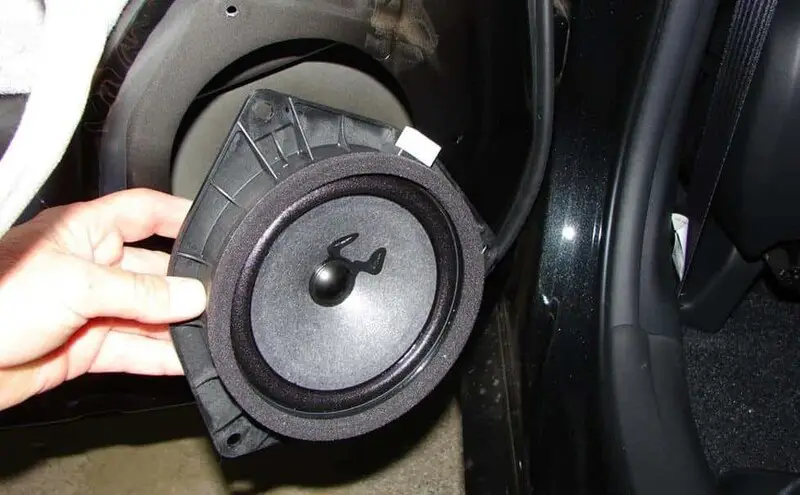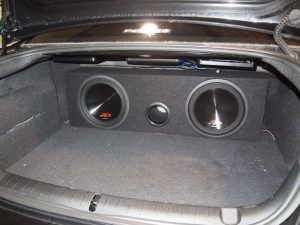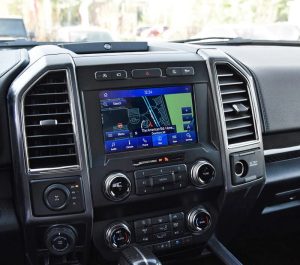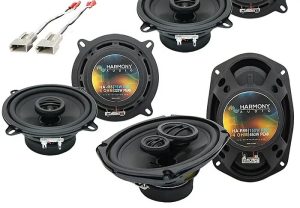Have you ever experienced the frustration of your car’s subwoofer cutting in and out while enjoying your favorite music on the road? It’s a common issue that can significantly diminish your audio experience. When your subwoofer cuts in and out, it means that the deep bass tones it produces intermittently stop playing, leading to an inconsistent and unsatisfying sound.
Several factors can cause a subwoofer to cut in and out. One common issue is loose or damaged wiring connections. Another possible cause is overloading the amplifier. Mismatched impedance between the subwoofer and amplifier can also lead to cut-outs. Inadequate power supply or faulty power connections can also contribute to subwoofer cut-outs.
By understanding these common causes, you can begin troubleshooting your subwoofer effectively. In this article, we will delve into the primary reasons behind this problem and provide you with valuable insights to troubleshoot and resolve it, ensuring you can enjoy uninterrupted bass in your car’s audio system.
Contents
Understanding the Importance of a Subwoofer in Your Car’s Audio System
Subwoofers play a vital role in a car’s audio system by enhancing the low-frequency sounds, also known as bass. While the main speakers in a car audio system can reproduce a wide range of frequencies, they often struggle to deliver the deep, rumbling bass tones that make music more immersive and enjoyable.
The purpose of a subwoofer is to specifically reproduce low-frequency sounds that are typically below 100 Hz. These frequencies are responsible for the impact and depth in music, especially genres like hip-hop, electronic, and rock, where bass plays a prominent role. Without a subwoofer, the audio system might sound flat and lacking in depth, robbing you of the full experience intended by the artists and producers.
A well-designed subwoofer adds a powerful punch to the music, making it feel more vibrant and engaging. It allows you to feel the thump of the kick drum, the reverberation of bass guitars, and the deep notes of electronic synthesizers. The presence of a subwoofer brings a new dimension to your favorite songs, immersing you in the music and intensifying the overall listening experience.
Common Causes of Subwoofer Cut-Outs
- Loose or Damaged Wiring Connections: One of the primary culprits behind subwoofer issues is loose or damaged wiring connections. Over time, vibrations from driving can cause wires to become loose or frayed, resulting in intermittent power supply to the subwoofer. Inspect the wiring connections for any signs of damage and ensure they are securely fastened.
- Overloading the Amplifier: If you frequently push your subwoofer and amplifier to their maximum limits, they might overheat or enter protection mode. When this happens, the subwoofer can cut out to prevent damage. Check your amplifier’s power rating and ensure it is compatible with your subwoofer’s specifications. Avoid extreme volume levels for long periods.
- Incorrect Impedance Match: Mismatched impedance between the subwoofer and amplifier can cause irregular power delivery, leading to cut-outs. Ensure that the impedance rating of your subwoofer matches the amplifier’s output. Consult the user manuals or seek professional advice if you are unsure about the compatibility.
- Faulty or Inadequate Power Supply: Insufficient power supply or a faulty power connection can affect the subwoofer’s performance. Verify that the power cables are properly connected to the amplifier and battery. Check for blown fuses and ensure the power supply meets the subwoofer’s requirements.
Troubleshooting Steps to Resolve Subwoofer Cut-Outs
Check and secure all wiring connections: Carefully examine the wiring connections between the subwoofer, amplifier, and power source. Reattach any loose connections and repair or replace any damaged cables.
- Verify amplifier settings: Ensure that the amplifier’s gain, crossover, and equalizer settings are properly adjusted. Incorrect settings can lead to distortion or cut-outs. Refer to the amplifier’s manual for guidance or consult a car audio professional.
- Test the subwoofer with a different source: Connect the subwoofer to a different audio source, such as a smartphone or MP3 player, to determine if the issue lies with the head unit or audio source. If the subwoofer works fine with another source, the problem may be with the original audio system.
- Seek professional assistance: If the above steps do not resolve the issue, it is advisable to consult a car audio specialist or technician. They have the expertise and tools to diagnose and fix complex subwoofer problems effectively.
Environmental Factors and Subwoofer Performance
Temperature and Humidity: Extreme temperatures and high humidity levels can affect the performance of your car’s subwoofer. Excessive heat can cause components to overheat and cut out, while high humidity can lead to condensation and damage. Keep your vehicle’s interior at a comfortable temperature and consider using a dehumidifier if necessary.
Vibrations and Shock: Vibrations from rough roads or excessive bass can loosen connections and cause intermittent cut-outs. Consider adding additional insulation or damping materials to reduce vibrations and protect your subwoofer from shock.
Maintenance and Care Tips for Your Car’s Subwoofer
- Regular Inspection: Make it a habit to visually inspect your subwoofer and wiring connections periodically. Look for any signs of wear and tear, loose connections, or damaged components. Promptly address any issues you identify.
- Proper Mounting and Enclosure: Ensure that your subwoofer is properly mounted and installed in a suitable enclosure. A secure mounting and an appropriate enclosure design help reduce vibrations and enhance the subwoofer’s performance and longevity.
- Cleanliness: Dust and debris can accumulate on the subwoofer cone and affect its sound output. Gently clean the subwoofer with a soft cloth or brush to remove any dirt or particles. Avoid using harsh chemicals or excessive force, as they can damage the subwoofer.
- Use High-Quality Audio Files: Low-quality audio files or improperly ripped music can result in distorted sound and subwoofer issues. Opt for high-quality audio files and ensure they are properly encoded for optimal playback.
Upgrading Your Car’s Audio System
Consider a Dedicated Subwoofer Amplifier: If you frequently experience subwoofer cut-outs or want to enhance the power and performance of your subwoofer, investing in a dedicated subwoofer amplifier can be beneficial. These amplifiers are specifically designed to provide clean and consistent power to your subwoofer.
Professional Installation: If you’re not confident in your DIY skills or want to ensure the best possible installation, consider having your subwoofer and audio system professionally installed. Professionals have the expertise to optimize the performance and address any potential issues during the installation process.
Conclusion
By understanding the common causes behind subwoofer cut-outs, following troubleshooting steps, and maintaining your car’s subwoofer properly, you can enjoy uninterrupted bass and an enhanced audio experience while driving. Don’t hesitate to seek professional assistance if needed, and consider upgrades to improve your car’s audio system’s overall performance. With proper care and attention, you can keep your car’s subwoofer performing flawlessly for many enjoyable road trips to come.






